Movie trailers. They’re those tantalizing morsels of cinema, meticulously crafted to spark our imaginations, ignite our anticipation, and, ultimately, pry us from our couches and into those plush theater seats. We consume them voraciously, dissecting every frame, every whisper of dialogue, hoping to catch a glimpse of the magic that awaits. But what happens when that enticing preview turns out to be a masterclass in misdirection, a cinematic sleight of hand designed to sell us a product that bears little resemblance to the one we actually buy?
It’s a question that has plagued moviegoers for decades, and frankly, it’s one we’re still grappling with. From cunningly edited scenes to outright fabrications, studios have, at times, played fast and loose with the truth, shaping narratives and tones in their marketing materials that simply do not exist in the final cut. The goal, almost always, is to sell tickets, to broaden a film’s appeal, to make a niche concept feel mainstream, or to simply capitalize on a star’s fleeting popularity.
We’ve all been there, haven’t we? That moment in the theater when you realize the film unfolding is not the film you were sold. With the latest “Thunderbolts” teaser already raising eyebrows for what it might be hiding, it’s high time we took a forensic look back at some of Hollywood’s most infamous offenders. These trailers didn’t just bend the truth; they snapped it over their knee. Prepare yourselves, because we’re about to expose marketing magic that left audiences bewildered, sometimes even infuriated.
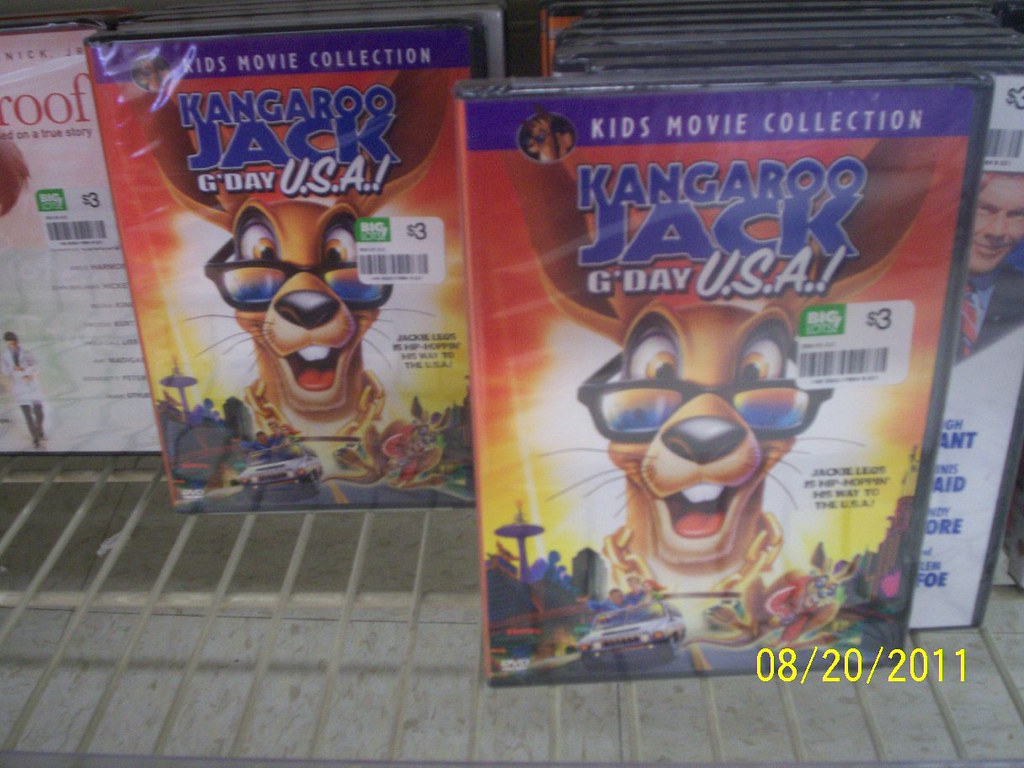
1. Kangaroo Jack (2003)
This one is practically the poster child for misleading trailers, an egregious example that has etched itself into the annals of cinematic infamy. Based solely on its marketing, you’d have been entirely justified in believing “Kangaroo Jack” was a delightful, family-friendly escapade featuring two bumbling friends and, crucially, a talking, rapping kangaroo hopping across the vast, sun-baked Australian outback. It promised hijinks, heartwarming moments, and perhaps a catchy, kangaroo-led beat.
The reality, however, was a stark and rather jarring departure. The actual film was, to put it mildly, far more raunchy and adult-oriented than its family-friendly advertising suggested. And as for the titular marsupial? Well, he barely talked, he certainly didn’t rap, and his screen time was surprisingly limited, relegated mostly to a brief dream sequence. It was a bait-and-switch of epic proportions, leaving a trail of confused parents and bewildered children in its wake.
This remarkable deception stemmed from a desperate, behind-the-scenes scramble. The film, initially an adults-only mob comedy, performed disastrously in test screenings. In a frantic bid to salvage it, producers attempted to water it down, drawing inspiration from “Snow Dogs.” This resulted in a retooled version, a CGI kangaroo hallucination, and a trailer that bore little resemblance to the critically drubbed final product. For shame, indeed.

2. Alien 3 (1992)
Releasing a teaser trailer for a movie that hasn’t even begun filming is a bold move, one fraught with peril. It’s a gamble on hype, a promise to an audience that you might ultimately be unable to keep. The early teaser for “Alien 3” serves as a cautionary tale, conjuring a vision of a film profoundly different from the one that eventually materialized on screens in 1992.
The tantalizing preview promised nothing less than the Xenomorphs — those terrifying, acid-blooded nightmares – finally arriving on Earth to unleash their signature brand of havoc. Imagine the sheer, exhilarating terror! Fans, already sky-high with expectations after the groundbreaking “Alien” and the action-packed “Aliens,” were primed for an apocalyptic showdown on our home planet. It was a concept that had the potential to redefine the franchise.
Instead, audiences received a far more claustrophobic and deeply disappointing experience. “Alien 3” takes place not on Earth, but on a desolate, penal colony world. Most beloved characters from “Aliens” were unceremoniously discarded early on. The film was plagued by “constant script rewrites and studio interference,” making that initial trailer’s grand promise a mere ghost of an idea.
Read more about: Beyond the Hype: 14 Critically Panned Sci-Fi Gems You Absolutely Need to See Right Now
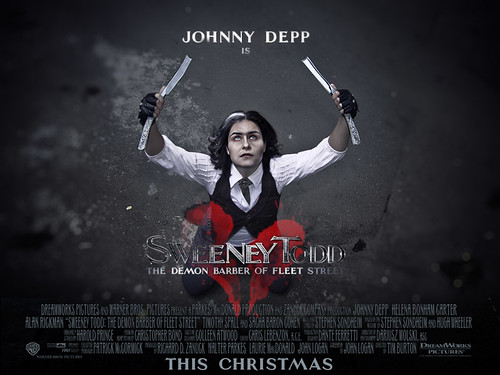
3. Sweeney Todd: The Demon Barber of Fleet Street (2007)
Musicals, for all their theatrical glory, can be a tough sell for broader modern movie-going audiences. Hollywood often suffers from a peculiar timidity when advertising them, frequently camouflaging their song-and-dance numbers. This trend, seen recently in “Wonka,” truly gained momentum with Tim Burton’s 2007 take on the iconic Stephen Sondheim and Hugh Wheeler musical, “Sweeney Todd.”
The trailers for “Sweeney Todd” were a masterclass in misdirection. They painted a picture of a deliciously gothic tale of revenge, featuring Johnny Depp as the titular barber, hell-bent on exacting retribution from the evil judge who wronged him. Visually stunning, atmospheric, and just dark enough to entice, the marketing successfully conveyed the film’s tone and star power. What it conveniently omitted, however, was the rather significant detail that the entire narrative was propelled by song.
This strategic omission led to genuinely bewildered moviegoers, some reportedly filing complaints after being surprised by a full-blown musical. Fortunately, “Sweeney Todd” managed to be both a critical and commercial hit despite its deceptive advertising. The film was “an exceptional masterpiece” and proved “Hollywood’s fear about advertising musicals is overblown,” suggesting audiences are perhaps more open than studios give them credit for.

4. Godzilla (2014)
Gareth Edwards’ 2014 “Godzilla” remake arrived at a particularly opportune moment: fresh off the acclaimed final season of “Breaking Bad,” Bryan Cranston was riding the crest of a massive wave of popularity. Studios, ever keen to capitalize on star power, seized this opportunity with both hands. The trailers for “Godzilla” were designed to make it seem as though Cranston’s character, Joe Brody, was not merely a supporting player, but the central protagonist.
The marketing materials prominently featured Cranston, conveying a sense of urgent, dramatic stakes through his performance. Audiences were primed for a conspiracy thriller, anticipating an intense, character-driven narrative with Cranston at its heart, battling both bureaucratic cover-ups and, presumably, the colossal titular monster. It was a brilliant, if utterly manipulative, use of an actor’s current cultural cachet to draw in a wider audience.
Alas, the film itself pulled a fast one. Joe Brody, despite his heavy trailer presence, “dies in the first act,” a mere forty-five minutes in. Focus then shifts to his son, Ford (Aaron Taylor-Johnson). While “solid,” this blatant misrepresentation of Cranston’s role left fans “rightfully disappointed,” with the actor stating his death was a “narrative mistake.”
Read more about: I’m a Mechanic: Some Cars Experts Would Never Buy (and Why You Should Avoid Them Too)

5. Drive (2011)
In 2011, the “Fast and Furious” franchise was roaring back to life, dominating the box office with its high-octane blend of cars, chases, and adrenaline. It’s understandable, then, that FilmDistrict would market “Drive” as another entry in that blockbuster, action-fueled vein. Ryan Gosling was starring, there were cars, and surely plenty of gun violence, screeching tires, and precarious stunts, right?
The trailers for “Drive” were meticulously edited to convey exactly that impression. They were “riddled with gun violence, screeching tires, hardcore action, and precarious stunts,” presenting a narrative that seemed poised for non-stop thrills. Ryan Gosling’s brooding, monosyllabic Driver, a character defined by his quiet intensity in the actual film, was deceptively portrayed as almost chatty in the trailer, implying a more conventional, energetic action hero rather than the laconic enigma he truly was.
However, as anyone who has actually seen Nicolas Winding Refn’s masterpiece can attest, “Drive” is most emphatically *not* a “Fast and Furious” type of movie. It is, in fact, a stylish, neo-noir drama, a meditative and at times brutally violent character study that “barely had any thrilling vehicular scenes” beyond the opening. Audiences expecting an “exhilarating adventure featuring cars” were “sourly disappointed,” realizing they had been sold a lean, existential thriller under the guise of an explosive Hollywood car chase flick.
Read more about: From Child Star to Industry Powerhouse: JoJo’s Unstoppable Evolution in Music and Beyond

6. Bridge to Terabithia (2007)
“Bridge to Terabithia” is a deeply affecting story, but its marketing campaign, orchestrated by Walt Disney Studios, proved to be one of the most egregious cases of genre misdirection. Following the success of their “Chronicles of Narnia” adaptation, which whisked children away to a magical world of wonder and mythical creatures, the studio decided to promote “Terabithia” in a remarkably similar fashion. The trailer “reminisces about the fantasy tales of Narnia,” showcasing two children venturing into a forest, seemingly embarking on a grand adventure filled with giants, fairies, and other magical entities.
The trailer painted a picture of a “fun family adventure flick,” a “heartwarming tale” where imagination literally brought a vibrant, fantastical world to life. It presented “Bridge to Terabithia” as a rollicking fantasy, a visually stunning journey into a secret realm, perfectly aligning with the expectations set by other popular children’s fantasy franchises of the era. The implication was clear: this was another joyous escape into a world of pure enchantment.
But here’s the crushing truth: the “magical world” of Terabithia was “a figment of imagination by the two kids,” an escape from real, painful problems. Rather than a true fantasy, the film “takes a much darker tone,” delving into “real-world trauma that the young characters go through.” The imagined creatures served as “metaphors for gloomy dilemmas faced by troubled youth,” including “bullying, dealing with death, guilt, and depression.” The filmmakers even “distanced themselves from the deceptive ad campaign,” recognizing how profoundly it misrepresented their poignant film about processing “the unexpected death of an innocent child.”
Read more about: 10 Movie Deaths That Utterly Ruined Our Day: Get Ready to Relive Those Gut-Wrenching Cinematic Moments

7. Jarhead (2005)
Ah, the war film. A genre often associated with adrenaline-pumping battles, heroic charges, and the visceral chaos of combat. The trailer for Sam Mendes’ 2005 film, “Jarhead,” certainly leaned into those expectations with gusto. It painted a picture of an action-packed war epic, something perhaps akin to “Saving Private Ryan” with its promise of intense, gritty battlefield sequences that would undoubtedly keep audiences on the edge of their seats. The promotional material seemed to scream, ‘Prepare for an explosive, in-your-face portrayal of military might!’
However, the actual film proved to be a masterclass in subverting those very expectations. “Jarhead,” based on a Marine’s memoir of serving in the Gulf War, was not about the glory of combat but rather the profound, often excruciating, day-to-day reality of serving overseas. It meticulously chronicled the tense yet tedious waiting, the psychological toll of deployment without immediate engagement, and the suffocating boredom that often defines modern warfare, a stark contrast to the thrilling action promised.
In a curious twist of fate, the film’s later direct-to-video sequels actually embraced the action-oriented template that the original trailer had so deftly sold. This only underscores the initial marketing’s profound misdirection, highlighting a studio’s willingness to present an entirely different vision of a film to secure box office success, even if it meant frustrating audiences who showed up for a different kind of war story.
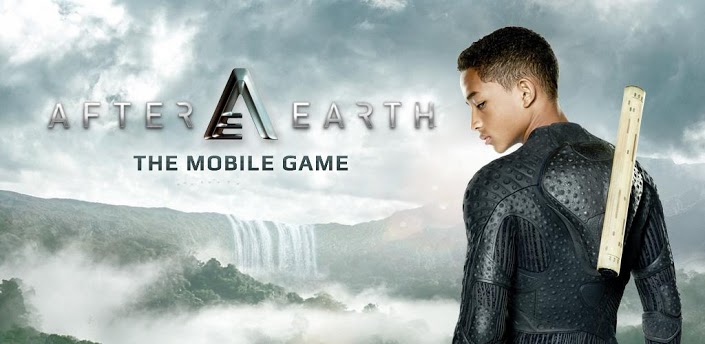
8. After Earth (2013)
There was a time, not so long ago, when Will Smith was synonymous with guaranteed box office success, a charismatic powerhouse who could open any movie. Sony, eager to capitalize on this formidable star power for their 2013 sci-fi epic “After Earth,” marketed the film as a dynamic father-son duo adventure, portraying Smith and his son Jaden as equal co-stars. The trailers framed it as a harrowing tale of survival where both Smiths were central to the narrative, much like their critically acclaimed collaboration in “The Pursuit of Happyness.”
But in a classic bait-and-switch, the film itself pulled a narrative fast one. Will Smith’s character, Cypher Raige, rather inconveniently breaks his legs early in the film, effectively sidelining the superstar. This decisive plot point then shifted the heavy burden of carrying the tale of survival squarely onto Jaden Smith’s shoulders, leaving the audience with a different protagonist than the one they were largely sold on.
While it’s difficult to quantify precisely how much this creative decision contributed to the film’s rather lackluster box office numbers, the relative lack of screen time for the universally bankable Will Smith certainly didn’t do the film any favors. It stands as a testament to studios using an actor’s current cultural cachet as a Trojan horse, drawing in viewers under potentially false pretenses.
Read more about: Beyond the Script: 10 Jaw-Dropping Real-Life Incidents That Shaped Harrison Ford’s Legendary Persona
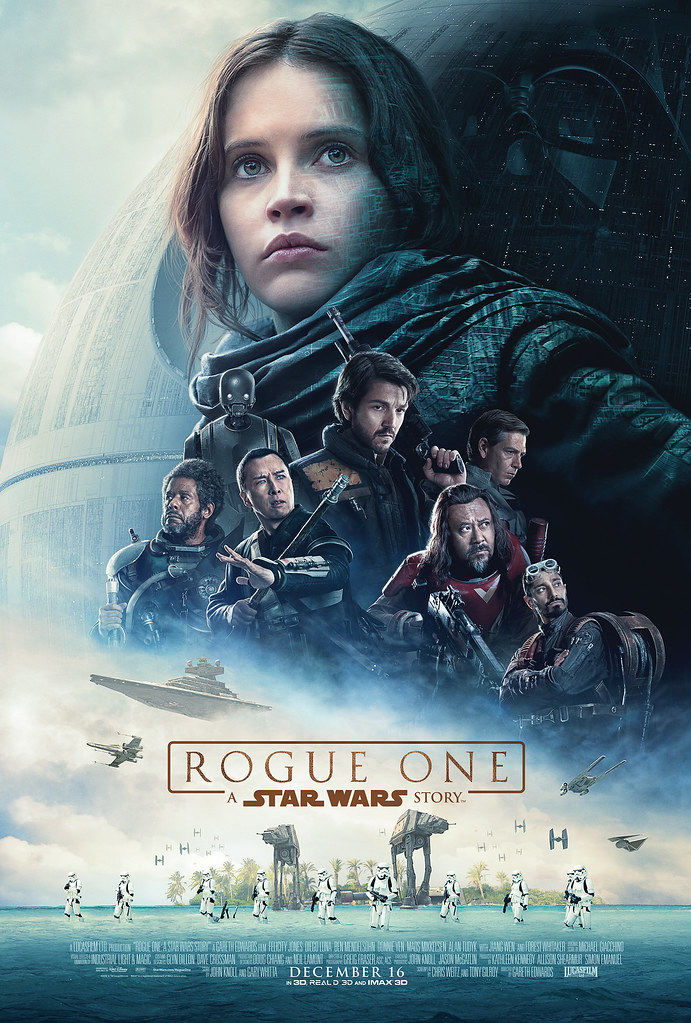
9. Rogue One: A Star Wars Story (2016)
“Rogue One: A Star Wars Story” carved out a unique space within the beloved galaxy far, far away, offering a grittier, war-torn perspective on the rebellion. The initial trailers for this prequel were nothing short of breathtaking, filled with iconic imagery, intense action sequences, and tantalizing dialogue that promised to fill in crucial gaps in the Skywalker saga. Fans dissected every frame, eager for a glimpse of the harrowing mission to steal the Death Star plans.
However, as viewers eventually discovered, many shots, scenes, and even lines of dialogue prominently featured in those captivating trailers were nowhere to be found in the final cut of the film. This wasn’t merely a few frames here and there; significant portions of the marketing material depicted events or character beats that simply didn’t make it to the big screen. The reason behind this cinematic disappearing act was the extensive reworking of the film’s climax via reshoots, which ultimately left a considerable amount of Scarif-based material on the cutting room floor.
While the final version of “Rogue One” ultimately delivered a pretty darned great Star Wars movie, earning critical acclaim and fan appreciation, the disparity between trailer and film highlights a fascinating aspect of modern filmmaking. Marketing teams often work with early cuts or even pre-visualization footage, creating compelling narratives that sometimes fail to keep pace with the evolving vision of the film itself.

10. Suicide Squad (2016)
The anticipation for 2016’s “Suicide Squad” was palpable, driven largely by a genuinely electrifying trailer that perfectly captured a specific dark, fun, anti-heroic vibe. Set to Queen’s iconic ‘Bohemian Rhapsody,’ the marketing promised a raucous, irreverent DC epic, jam-packed with colorful villains, explosive action, and a significant, menacing presence from Jared Leto’s highly anticipated take on the Joker. It truly did a pretty good job of selling the movie, sparking widespread excitement.
In a rare turn of events, the trailer was so exceptionally well-received that it reportedly prompted Warner Bros. to work with the company that produced it to re-edit the actual film, attempting to infuse it with the trailer’s much-lauded peppy and entertaining tone. This behind-the-scenes maneuver, however, couldn’t entirely bridge the gap. The actual film, despite these efforts, ultimately proved nowhere near as dynamic or entertaining as its promotional predecessor, leaving many viewers feeling a distinct sense of tonal whiplash.
Moreover, the trailer heavily implied a substantial role for Jared Leto’s Joker, a character fans had been eagerly awaiting for eight years. Yet, in the finished film, his screen time was significantly reduced, with a clear lot of material left on the cutting room floor. The much-discussed ‘Ayer Cut’ has since become a legendary artifact of what might have been, a poignant reminder of how studio interference and marketing promises can diverge so drastically from the final artistic vision.
Read more about: In Front of the Lens: 12 Actors Whose Profound On-Screen Devotion Led to Unforeseen Personal Turmoil
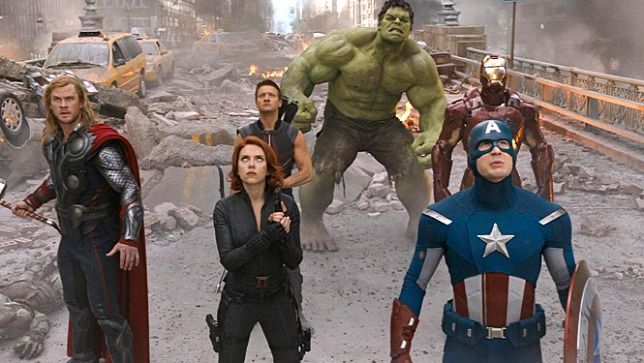
11. Avengers: Infinity War (2018)
Marvel Studios has generally maintained a reputation for meticulous planning and tight-lipped secrecy, especially when it comes to their monumental crossover events. Yet, even the juggernaut “Avengers: Infinity War” trailer contained its fair share of clever, if slightly deceptive, misdirections. Eagle-eyed fans noticed minor alterations, such as a shot of Captain America wrestling with Thanos in Wakanda where the Mad Titan’s Infinity Gauntlet mysteriously featured fewer Infinity Stones than he possessed at that point in the film, an apparent attempt to disguise how far along Thanos was in his master plan by that point.
Other minor discrepancies, like Thor’s now-famous line, “Who the hell are you guys?!?”, which then cut to a completely different shot of the Guardians of the Galaxy in the trailer, were arguably clever ways to protect major plot points or simply generate hype. These were mostly subtle edits, designed to prevent spoilers and maintain suspense for a film that redefined blockbuster stakes.
However, the “Infinity War” trailer did include one major lie that significantly altered a character’s arc in the minds of viewers. It prominently featured a shot of the Avengers charging heroically through the Wakandan jungle with the Hulk in tow, a powerful image of their combined might. As legions of fans now famously know, Mark Ruffalo’s Bruce Banner never transforms into Hulk after the film’s opening act, with the finished version showing a Hulkbuster-clad Banner leading the charge through different terrain. This wasn’t a minor edit; it fundamentally misrepresented a critical narrative choice and character journey.
Read more about: The $10 Million Mistake? Unpacking the Hidden Costs and Unforeseen Opportunities in Superhero Cinema’s Biggest Blockbusters
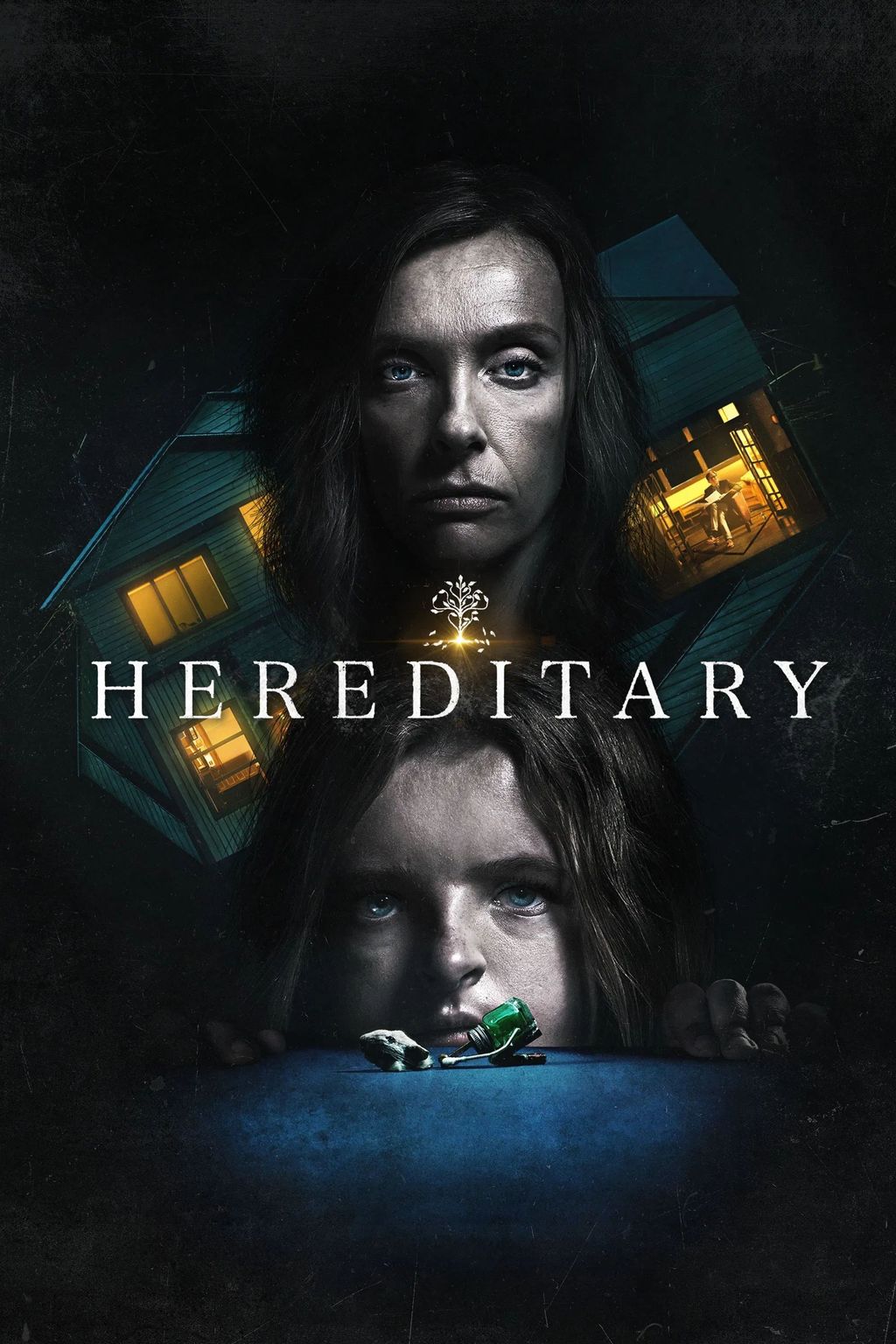
12. Hereditary (2018)
A24 has cultivated a reputation for pushing the boundaries of horror, and Ari Aster’s “Hereditary” stands as a chilling testament to that. The film is celebrated for delivering one of the most memorable horror movie plot twists this side of “The Sixth Sense,” a gut-wrenching moment that reshapes the entire narrative. What made this twist all the more shocking, and indeed effective, was the masterful misdirection woven into the film’s marketing. The trailers for “Hereditary” meticulously crafted an illusion, making it seem as though Milly Shapiro’s character, Charlie, was actually the central figure, the troubled teen around whom the supernatural events would unfold.
The promotional materials carefully highlighted Charlie’s peculiar behaviors and her connection to the unfolding dread, leading audiences to believe they were embarking on a journey primarily through her eyes. This focus built a strong emotional investment in her character, setting up a particular expectation about the narrative’s direction and who its primary protagonist would be. It was a classic red herring, brilliantly executed.
Then came the moment that ripped those expectations to shreds: Charlie’s gruesome, unexpected death early in the film. This brutal and shocking demise completely upended the narrative, leaving audiences stunned and profoundly unsettled. A24’s “sneaky” marketing played a crucial role in amplifying this twist’s impact, proving that sometimes, a good lie in a trailer can enhance the cinematic experience, even if it initially leaves viewers bewildered by the abrupt narrative shift.
Read more about: The Science of Fear: Unmasking the Decade’s Scariest Horror Films, Crowned by Data and Critics

13. Yesterday (2019)
In a world where trailers are increasingly scrutinized for every frame, the marketing campaign for the 2019 film “Yesterday” committed a particularly brazen act of deception that, unusually, led to legal action. The trailers prominently featured the incredibly popular and then-rising star Ana de Armas, showcasing her in what appeared to be a significant role as a love interest for Himesh Patel’s Jack Malik. Leveraging her burgeoning celebrity, the studio clearly intended to draw in a wider audience, banking on her charm and appeal.
However, much to the dismay of many viewers and especially de Armas’s burgeoning fanbase, when the film was finally released, any trace of her character was completely absent. The subplot involving her had been trimmed from the theatrical release, making her prominent inclusion in the trailers a blatant misrepresentation. While it’s not entirely uncommon for roles or scenes to be cut from a final film during the editing process, it is a rare and ethically questionable move to feature an entirely excised performer so prominently in promotional material.
This strategic omission understandably sparked outrage among fans, who felt they had been falsely enticed to see the movie. A group of these disgruntled moviegoers went as far as to file a lawsuit against Universal, alleging false advertising. The legal battle gained significant media attention, highlighting the growing frustration with misleading trailers and setting a precedent for consumer protection in the entertainment industry.
Ultimately, the lawsuit suffered the same fate as Ana de Armas’s scene, being thrown out by the judge. Nevertheless, the incident remains a potent example of how studios can push the boundaries of promotional ethics, reminding audiences that sometimes, what you see in the trailer is not always what you get in the theater, and the consequences can be more than just a ruined night out.
And so, we’ve journeyed through more than a dozen examples of cinematic bait-and-switch, a sobering reminder that movie trailers, for all their dazzling allure, are ultimately sales pitches. They are meticulously crafted tools designed to ignite our imaginations and loosen our purse strings, sometimes at the expense of absolute honesty. From altering plot points to inventing characters, disguising genres to exaggerating star power, these instances reveal the immense pressure on studios to deliver box office gold. As discerning viewers, perhaps the lesson here isn’t to distrust entirely, but to approach every tantalizing preview with a healthy dose of Vulture-esque skepticism, knowing that the real magic, or indeed, the real disappointment, often lies beyond the hype.



